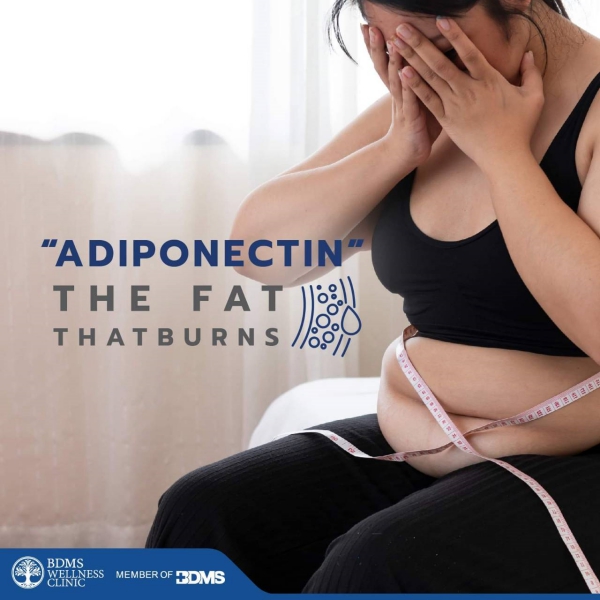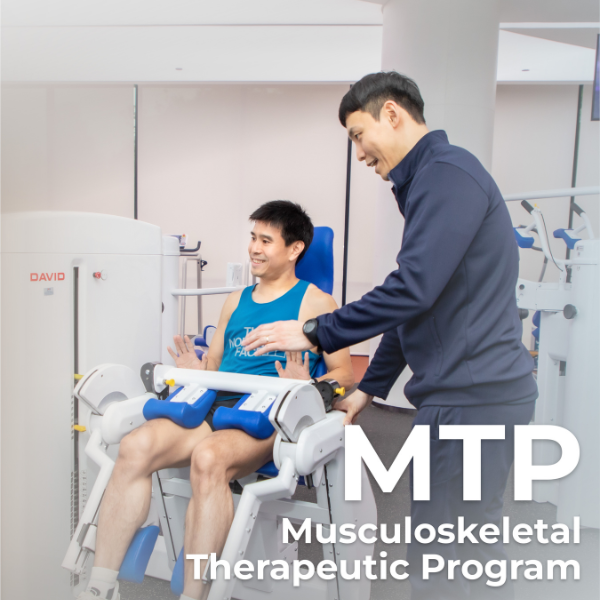Adiponectin: The Fat that Burns
The obesity rate around the world is still growing at an alarming rate and is not slowing down. Thailand ranks second as the country with the most overweight citizens in South East Asia, second only to Malaysia. According to 2016, 32.6% of Thai people were overweight or diagnosed as obese, with urban areas like Bangkok having a 50% higher rate than other provinces.

It is widely accepted that obesity is the result of changing modern lifestyles. Risks are heightened by common behaviors such as eating unhealthy food, usually a combination of fast food, soft drinks, beverages high in sugar, or foods with low nutritional value. This trend is further reinforced by the fast-paced lifestyle of urban population. Those who have less time for physical activities, getting less than 8 hours sleep, and more time spent on mobile phones and computers likely to become overweight and obese.
Obesity is far more detrimental to health than just about aesthetics and beauty standards. It leads to complications such as insulin resistance and metabolic syndrome, which are caused by abnormal metabolism within the body. This leads to high blood pressure, diabetes and high cholesterol, and over time these conditions result in problems with coronary artery disease, development of fatty liver disease, sleep apnea, acid reflux and more.
Body Mass Index (BMI) is used as an indicator for obesity. It is a simple calculation of a person’s weight (kilograms) divided by their height (meters) twice. Results with values in the range of 25 - 29.9 kg/m2 are considered overweight, and results with higher than 30 kg/m2 are considered obese.
However, the most accurate result does not rely on BMI alone due to the fact that the main components of our body consist of water mass, bone mass, fat mass and muscle mass. This is the reason why some individuals who have a normal body weight (BMI 18.5 - 24.9 kg / m2), when examining body composition using the Dual-energy X-ray absorptiometry (DXA or DEXA), found their body mass was composed of a large amount of fat. As a standard, women should not have more than 32% of body fat and men should not exceed 28%.
It is worth noting that people with obesity are more likely to have a higher number of fat cells (formally known as Adipocyte) than people with a normal body weight. Adipocyte acts as the energy storage of our body. It is also an endocrine gland (Endrocrine organ) which produces substances to control the work of other organs. These substances are collectively known as Adipocytokines or Adipokines such as Free fatty acid, Tumor necrosis factor-alpha (TNF-a), Interleukin-6, Resistin and Plasminogen activator inhibitor 1. The downside is that, generally, these substances are known to cause insulin resistance, which increases the risk of type 2 diabetes, high blood pressure, chronic kidney disease, coronary artery disease and more.
There is a newly found type of Adipocytokines called Adiponectin, discovered in 1995, which is a type of protein made from fat cells in the body that act on our muscles and liver. Adiponectin is associated with energy metabolism, controlling glucose metabolism, increasing insulin sensitivity, reducing inflammatory, responsible for the growth of cells and the prevention of blood clotting.
Adiponectin comes in many forms. The most effective form is High-Molecular Weight Multimer (HMW), which is used to measure Insulin resistance and Metabolic syndrome. It has been widely concluded through numerous studies that people with obesity have lower levels of Adiponectin than those with normal body weight. Moreover, people with type 2 diabetes, high blood pressure, chronic kidney disease, and coronary artery disease are found to have lower Adiponectin levels than those who do not have these diseases.
If you want to know how well your body is performing against obesity, measuring Adiponectin levels is always a good idea as knowing your level of Adiponectin can help prevent many diseases. We can increase adiponectin in our body by regular exercise, controlling an appropriate body weight, improving your daily diet to include food rich in fiber, complex carbohydrate, and foods that are high in zinc, such as dried beans, nuts, grains, green vegetables. If we try to have each and every meal consist of 50% of these foods, then obesity could be kept at bay.
Sources:
- BDMS Wellness Clinic and Bangkok Association of Regenerative Health and The Study of Obesity (BARSO)
- Thailand Business News. [cited Nov,26 2018]. Available from https://www.thailand-business-news.com/asean/49065-thailand-ranks-second-asean-prevalence-obesity-mcot-net.html
- Organization WH. Global Health Observatory (GHO) data: Obesity. World Health Organization Available from https://www.who.int/gho/ncd/risk_factors/overweight/en/. 2016;17.
- รายงานประจำปี 2560 กรมอนามัย. [cited Nov,26 2018]. Available from http://env.anamai.moph.go.th/download/actionplan/reportEB4_210261.pdf
- Tomlinson DJ, Erskine RM, Morse CI, Onambélé GL. Body fat percentage, body mass index, fat mass index and the ageing bone: their singular and combined roles linked to physical activity and diet. Nutrients. 2019;11(1):195.
- Kadowaki T, Yamauchi T, Kubota N, Hara K, Ueki K, Tobe K. Adiponectin and adiponectin receptors in insulin resistance, diabetes, and the metabolic syndrome. The Journal of clinical investigation. 2006;116(7):1784-92.
- Matsuzawa Y, Funahashi T, Kihara S, Shimomura I. Adiponectin and metabolic syndrome. Arteriosclerosis, thrombosis, and vascular biology. 2004;24(1):29-33.
- Straub LG, Scherer PE. Metabolic messengers: adiponectin. Nature Metabolism. 2019;1(3):334-9.
Recommended Packages & Promotions

 คลินิกสร้างเสริมและฟื้นฟูระบบกล้ามเนื้อและกระดูก
คลินิกสร้างเสริมและฟื้นฟูระบบกล้ามเนื้อและกระดูก
ฟื้นฟูสุขภาพ ป้องกันออฟฟิศซินโดรม ด้วยโปรแกรมออกกำลังกายเฉพาะบุคคล โดยทีมแพทย์ผู้เชี่ยวชาญ...





